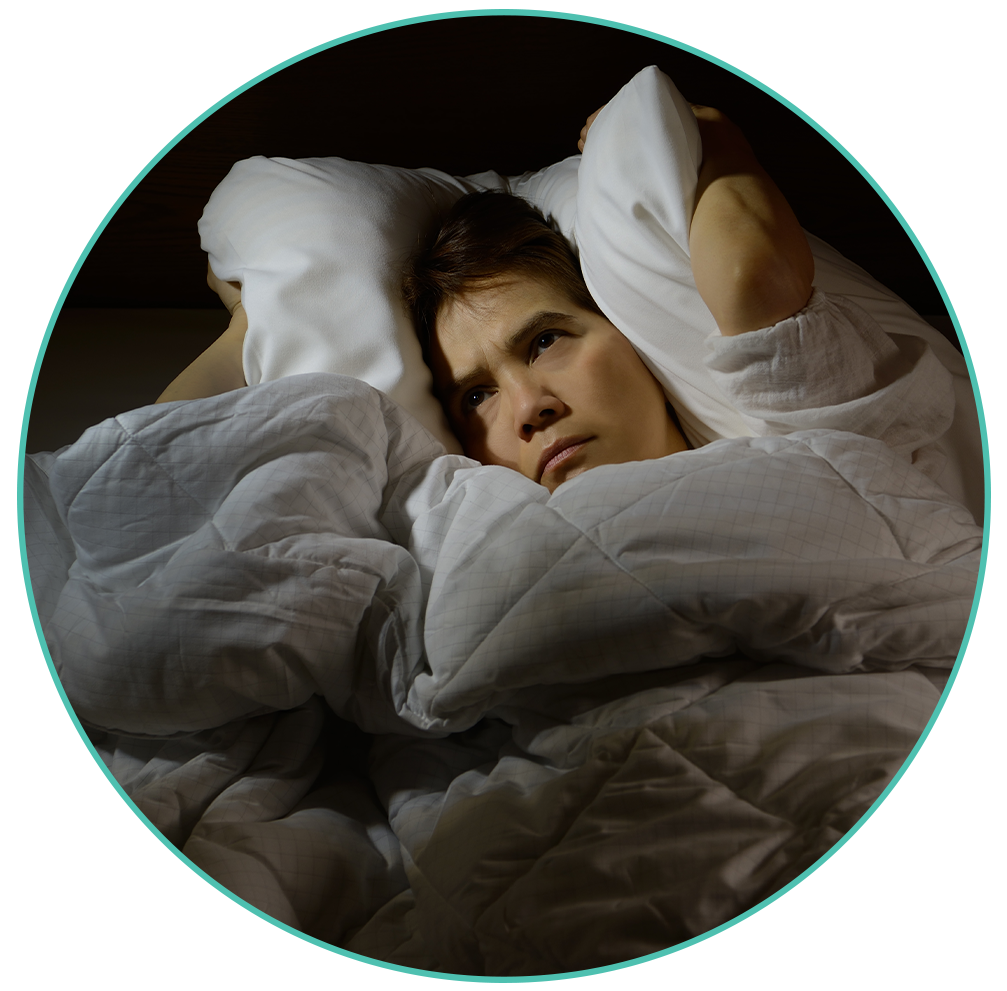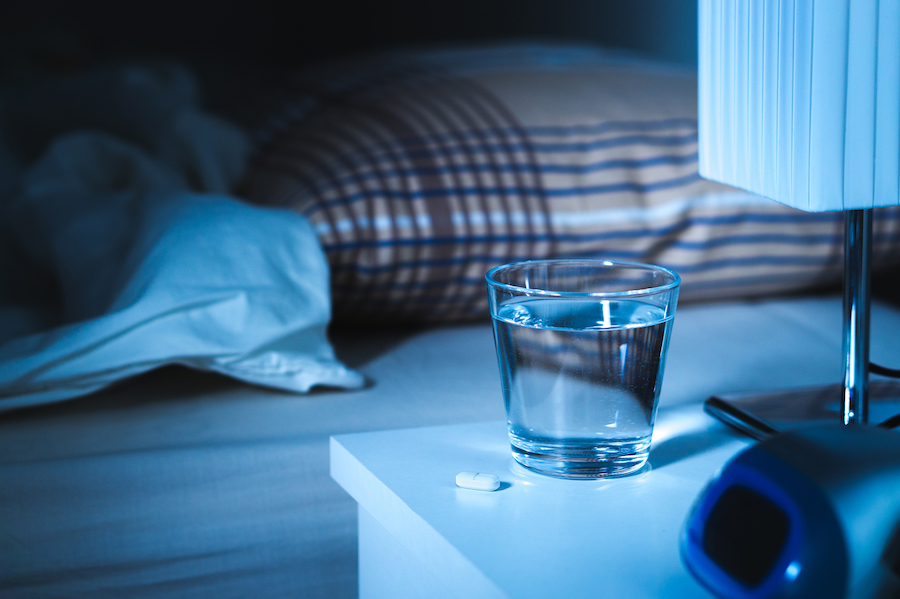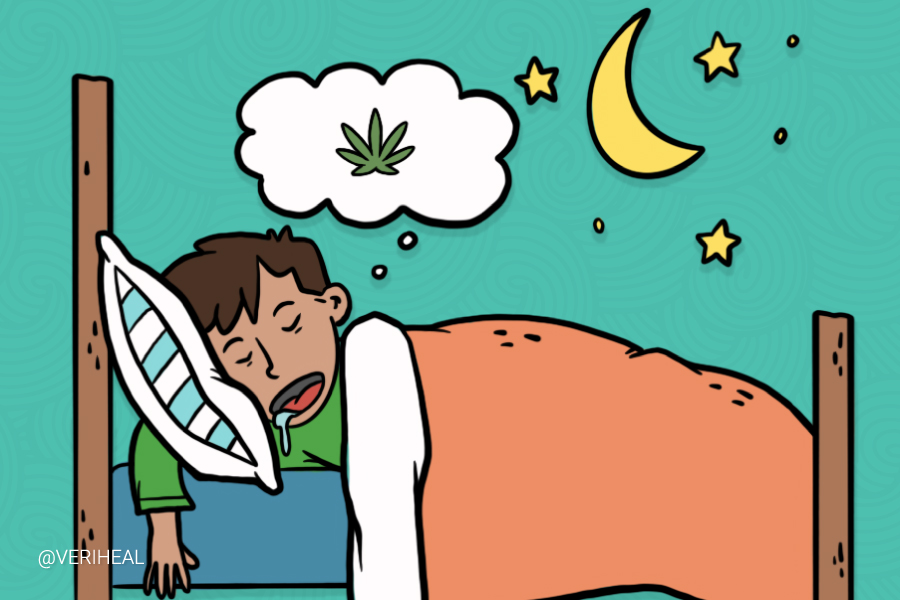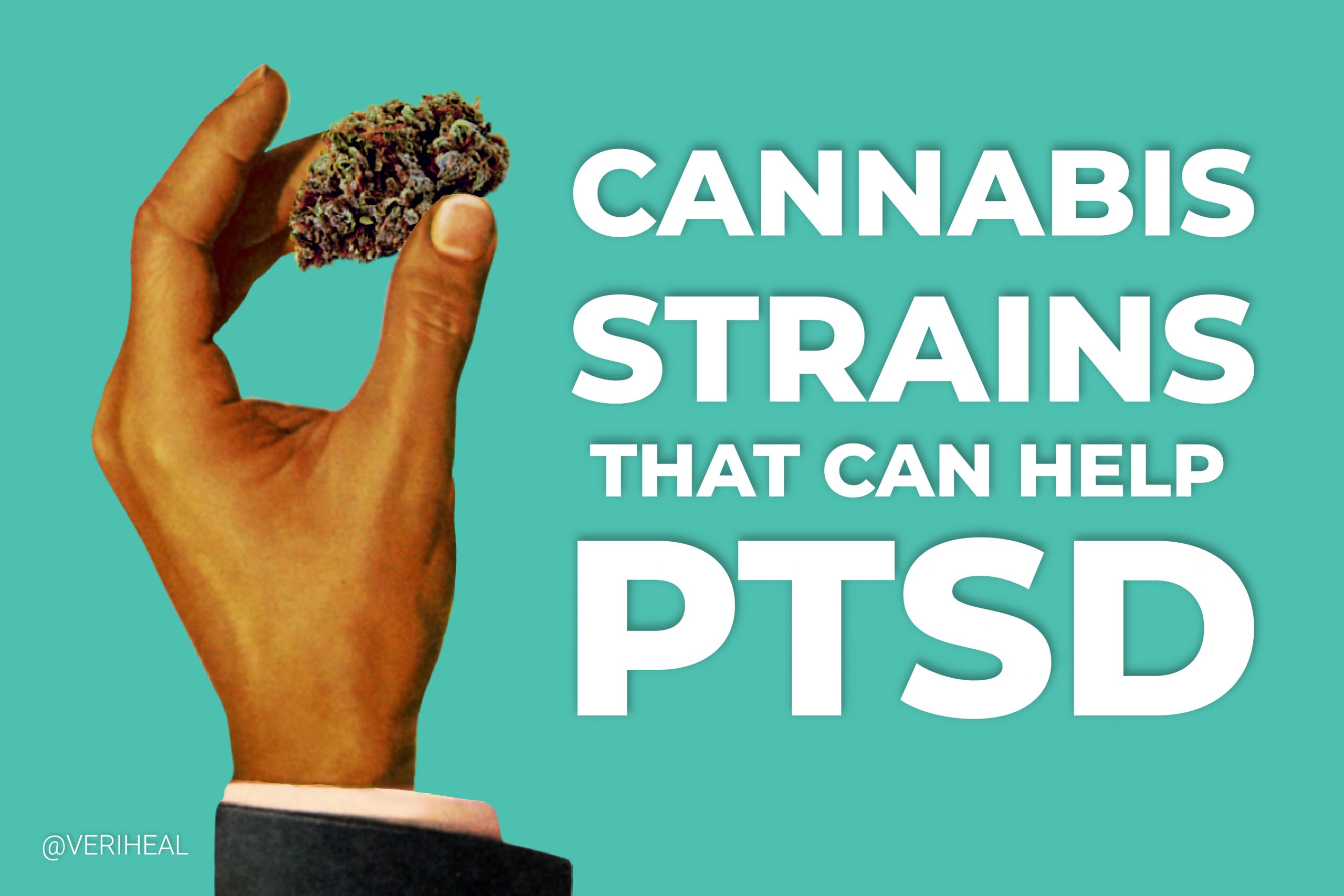Night Terrors: Patients Try Medical Marijuana as a Sleep Aid
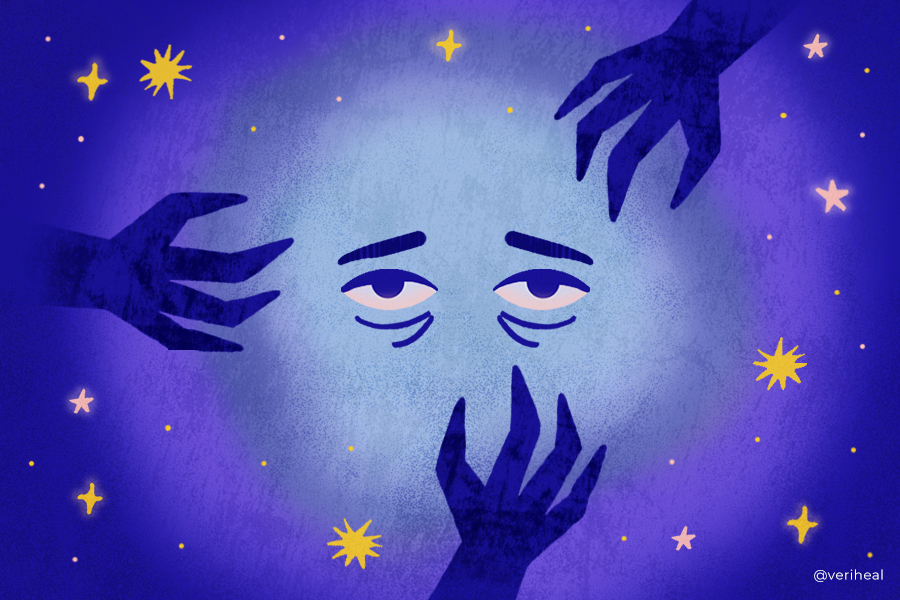
- Using Medical Cannabis to Help Sleep Terrors
- Sleep Disturbances and Cannabis: Considerations to Keep in Mind
- Nightmares vs. Night Terrors
- Types of Parasomnia Sleep Disturbances
- Night Terrors and Medical Cannabis
Night terrors, or sleep terrors, may seem scary for those who are observing one, but many patients do not remember them as they are fully asleep. Night terrors are considered a type of parasomnia or sleep disturbance that is characterized by unusual sleep behaviors while one is asleep. Despite being asleep, patients who experience sleep terrors often feel fatigued, or tired during the day.
Medical cannabis has a detailed history of helping people get a good night’s sleep. Many studies show health benefits that can help improve sleep quality, restfulness, decrease sleep disturbances and improve sleep onset latency (9)(20).
Δ9-tetrahydrocannabinol (THC) and cannabidiol (CBD) are just a few of the cannabinoids found in cannabis that affect the body through our body’s own endocannabinoid system (ECS). The ECS is made of fat-based neurotransmitters that can be increased or decreased through cannabinoid receptors CB1 and CB2. Cannabinoids are also known to interact with various other receptors like serotonin, dopamine, and vanilloid receptors that may also influence normal body chemistry (8). In addition, the ECS is responsible for the body being able to maintain proper body temperature as well as modulating the immune system and maintaining the circadian rhythm or sleep-wake cycle (2).
For more information on how the endocannabinoid system works, please see our page on endocannabinoids here.
Using Medical Cannabis to Help Sleep Terrors
It is important to know that cannabis use has been shown to affect sleep in the short term by decreasing waking after falling asleep, however, using it long-term can actually increase sleep disturbances especially while discontinuing medical marijuana (2). Taking cannabis with other sedating medications may potentiate their drowsy effect.
For sleep issues, a summary of research suggests that patients may benefit from high doses of CBD and lower doses of THC to help improve sleep despite some recommendations about high-THC strains (2). Mycerene is a terpene that is the most plentiful found in cannabis and is heavily associated with sleep. It can also be found in thyme, mangoes, and lemongrass. Additionally, cannabinol (CBN) is becoming popular in dispensaries because of its sedative effects. is very important to talk with a clinical cannabis specialist or a sleep specialist about your sleep problem concerns.
Sleep Disturbances and Cannabis: Considerations to Keep in Mind
Many studies that show positive reductions in sleep disturbances, came across this information as a secondary finding in studies exploring medical cannabis and specific health conditions including multiple sclerosis (MS), chronic pain, and post-traumatic stress disorder (PTSD) (9). If you have medical conditions that may cause night terrors, it is important to talk to a doctor about treating your sleep disturbances with cannabis.
Proper sleep hygiene, along with other environmental, psychiatric, medical, sleep disorders, or stressful conditions should continue being managed appropriately with medical supervision. Habitually using any sleep aid or medication, including cannabis, to fall or stay asleep may not be appropriate for everyone. A small portion of people may develop tolerance, dependence, continued sleeping problems, or other side effects – although these are not typical (2).
Nightmares vs. Night Terrors
Some people may colloquially use the terms nightmares and night terrors interchangeably, but the fact remains that these conditions occur during different stages of sleep and have different levels of awareness by the sleeper.
Nightmares
Nightmares are bad dreams that cause the person having them to feel fear, terror, distress, or anxiety. They typically begin before the age of ten are considered a normal part of childhood, though they can continue in adults. They can be triggered by major life events or increased stress at home or at work. In addition, some medications may trigger nightmares along with drinking too much alcohol or eating right before going to bed (15). Nightmares occur typically during rapid-eye-movement (REM) sleep. About 71% of patients with PTSD experience nightmares after trauma, compared to 2-5% of the other population (10).
Night Terrors
Night terrors, unlike nightmares, typically occur during non-REM (NREM) sleep and is considered a sleep arousal disorder. They typically occur within the first three or four hours of sleep and are more common in children, but rare in adults. Night terrors typically last 10 minutes but can last up to 30 or 40 minutes. Though the patient may be kicking, flailing, screaming, or even opening their eyes, they are fully asleep and are unlikely to remember the event. Much like other sleep disturbances such as sleepwalking, it is not recommended to wake the patient up while a sleep terror is occurring (16).
Types of Parasomnia Sleep Disturbances
Parasomnia is a term used to describe unusual behaviors while people are asleep, falling asleep, or during the period between sleeping and wakefulness (17). Parasomnias typically occur as the brain transitions in and out of sleep cycles. For more information about sleep cycles, please check out our page on insomnia.
The three main types of parasomnias include:
NREM-related Parasomnias (17)
- These are disturbances that occur during non-REM (NREM) stages of sleep, unlike nightmares that occur in REM sleep while dreaming.
- These sleep disorders include:
- Confusional arousals
- Patients wake up confused, have dilated pupils, accelerated heart rate, or sweating.
- Night terrors
- Sleepwalking
- Sexsomnia, or abnormal sleep-related sexual behaviors.
- Confusional arousals
REM-related Parasomnias (17)
- These occur during REM sleep
- They include:
- REM sleep behavior disorder (RSBD) – which is characterized by unusual vocalizations or movements during REM sleep.
- Sleep paralysis – when people are unable to move parts of their body before they completely fall asleep or upon waking up
- Nightmare disorder
Other Parasomnias (17)
- These conditions occur during the transitions of sleep or wakefulness, as well as those that can occur during NREM or REM
- Some examples include:
- Bedwetting or sleep enuresis
- Sleep-related hallucinations
- Exploding head syndrome – patients hear a loud noise or feel an exploding sensation while waking up
Night Terrors and Medical Cannabis
Though there is not much research specifically focusing on night terrors and medical cannabis to help with sleep, there is research that supports the use of cannabinoids in RSBD, a REM-related parasomnia. This study focused on the use of CBD in patients with REM behavior disorder in adults with Parkinson’s disease (2). This study was very small and more research into using cannabinoids for parasomnia is needed, but it showed positive results of CBD being able to suppress RSBD, which is very promising. In general, sleep issues should be discussed with your provider and cannabis can be one part of the equation for better sleep.
Note: Veriheal does not intend to give this as professional medical advice. Do not attempt to self-diagnose or prescribe treatment based on the information provided on this page. Always consult a physician before making any decision on the treatment of a medical condition.
1. ASA Authors & Reviewers Sleep Physician at American Sleep Association Reviewers and Writers Board-certified sleep M.D. physicians. (n.d.). Cbd: For sleep and insomnia. Retrieved April 14, 2021, from https://www.sleepassociation.org/sleep-treatments/cbd/
2. Babson, K. A., Sottile, J., & Morabito, D. (2017). Cannabis, Cannabinoids, and Sleep: a Review of the Literature. Current psychiatry reports, 19(4), 23. https://www.med.upenn.edu/cbti/assets/user-content/documents/s11920-017-0775-9.pdf
3. Belendiuk, K. A., Babson, K. A., Vandrey, R., & Bonn-Miller, M. O. (2015). Cannabis species and cannabinoid concentration preference among sleep-disturbed medicinal cannabis users. Addictive Behaviors, 50, 178-181. https://www.sciencedirect.com/science/article/abs/pii/S0306460315002269?via%3Dihub
4. Carley, D. W., Paviovic, S., Janelidze, M., & Radulovacki, M. (2002). Functional role for cannabinoids in respiratory stability during sleep. Sleep, 25(4), 391–398. https://pubmed.ncbi.nlm.nih.gov/12071539/
5. Choi, S., Huang, B. C., & Gamaldo, C. E. (2020). Therapeutic Uses of Cannabis on Sleep Disorders and Related Conditions. Journal of clinical neurophysiology: official publication of the American Electroencephalographic Society, 37(1), 39–49. https://pubmed.ncbi.nlm.nih.gov/31895189/
6. F. (2020, June 05). Night terrors and nightmares – Toddlers & children: Familydocotor.org. Retrieved April 14, 2021, from https://familydoctor.org/condition/nightmares-and-night-terrors/
7. Gates, P. J., Albertella, L., & Copeland, J. (2014). The effects of cannabinoid administration on sleep: A systematic review of human studies. Sleep Medicine Reviews, 18(6), 477-487. https://www.sciencedirect.com/science/article/abs/pii/S1087079214000215
8. Ibeas Bih, C., Chen, T., Nunn, A. V., Bazelot, M., Dallas, M., & Whalley, B. J. (2015). Molecular Targets of Cannabidiol in Neurological Disorders. Neurotherapeutics : the journal of the American Society for Experimental NeuroTherapeutics, 12(4), 699–730. https://www.ncbi.nlm.nih.gov/pmc/articles/PMC4604182/
9. Kuhathasan, N., Dufort, A., MacKillop, J., Gottschalk, R., Minuzzi, L., & Frey, B. N. (2019). The use of cannabinoids for sleep: A critical review on clinical trials. Experimental and Clinical Psychopharmacology, 27(4), 383-401. https://doi.apa.org/doiLanding?doi=10.1037%2Fpha0000285
10. Levrier, K., Marchand, A., Belleville, G., Dominic, B. P., & Guay, S. (2016). Nightmare Frequency, Nightmare Distress and the Efficiency of Trauma-Focused Cognitive Behavioral Therapy for Post-Traumatic Stress Disorder. Archives of trauma research, 5(3), e33051. https://www.ncbi.nlm.nih.gov/pmc/articles/PMC5078833/
11. Linares, I., Guimaraes, F. S., Eckeli, A., Crippa, A., Zuardi, A. W., Souza, J., Hallak, J. E., & Crippa, J. (2018). No Acute Effects of Cannabidiol on the Sleep-Wake Cycle of Healthy Subjects: A Randomized, Double-Blind, Placebo-Controlled, Crossover Study. Frontiers in pharmacology, 9, 315. https://www.ncbi.nlm.nih.gov/pmc/articles/PMC5895650/
12. Manni, R., Toscano, G., & Terzaghi, M. (2018). Therapeutic symptomatic strategies in the parasomnias. Current Treatment Options in Neurology, 20(7). https://link.springer.com/article/10.1007/s11940-018-0508-3
13. Murillo-Rodríguez, E., Machado, S., Imperatori, C., Yamamoto, T., & Budde, H. (2021). Natural cannabinoids as templates for sleep disturbances treatments. Advances in Experimental Medicine and Biology, 133-141. https://link.springer.com/chapter/10.1007/978-3-030-61663-2_9
14. Murillo-Rodríguez E. (2008). The role of the CB1 receptor in the regulation of sleep. Progress in neuro-psychopharmacology & biological psychiatry, 32(6), 1420–1427. https://pubmed.ncbi.nlm.nih.gov/18514375/
15. Nightmares: Medlineplus medical encyclopedia. (n.d.). Retrieved April 14, 2021, from https://medlineplus.gov/ency/article/003209.htm
16. Pacheco, Danielle. Night terrors (sleep terrors) – definition, causes, treatments. (2020, October 02). Retrieved April 14, 2021, from https://www.sleepfoundation.org/parasomnias/night-terrors
17. Pacheco, Danielle. Parasomnias – types, Symptoms, & causes. (2020, October 02). Retrieved April 14, 2021, from https://www.sleepfoundation.org/parasomnias
18. Shannon, S., Lewis, N., Lee, H., & Hughes, S. (2019). Cannabidiol in Anxiety and Sleep: A Large Case Series. The Permanente journal, 23, 18–041. https://www.ncbi.nlm.nih.gov/pmc/articles/PMC6326553/
19. Winiger, E. A., Hitchcock, L. N., Bryan, A. D., & Cinnamon Bidwell, L. (2021). Cannabis use and sleep: Expectations, outcomes, and the role of age. Addictive Behaviors, 112, 106642. https://www.sciencedirect.com/science/article/abs/pii/S0306460320307723?via%3Dihub
20. Whiting PF, Wolff RF, Deshpande S, et al. Cannabinoids for Medical Use: A Systematic Review and Meta-analysis. JAMA. 2015;313(24):2456–2473. https://jamanetwork.com/journals/jama/fullarticle/2338251












